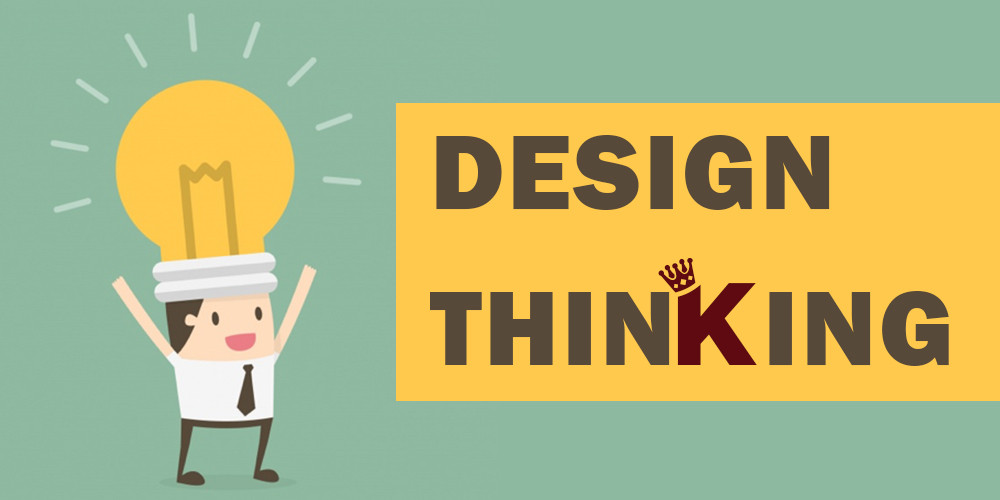WBE Design Thinking
The methodology of Design Thinking is regarded to creative strategies of designers that used in the process of projecting. Also Design Thinking is the methodology that is used to solve not only designer tasks but also important social problems. It helps to look on the problem from a wide perspective, to get to the bottom of its things and with the help of more detailed analysis offer unconventional decisions that could prevent many problems in the future.
This methodology is good because it helps deeper consider the progect and due to this better understand the problem and go forward to beter decisions unlike to old-fashioned methodoly Business Thinking. The pros of Bussiness Thinking is that it allows to generate maximum quantity of ideas for short periods, not rejecting and not criticizing any of them (even unexpectable ideas have a right to exist and as practice of many companies show that especially the most unexpectable ideas often lead to the best result).

Below introduced illustrative examples of all process according to this methodology.

1. Empathize
The first stage of the process of Thinking Design lays in getting the whole understanding of the problem that you try to solve. It anticipates consultation with experts in order to find out more about the sphere where the problem appeared. It needed to observe, attract and to empathize to the people to understand their experience and motives and also to get deep into physical environment in order to deeper understand personal problems.
2. Define (The Problem)
During the stage of defining you collect the information that you created and gathered during the stage of empathizing. You will analyze your observations and synthesize them in order to define main problems that you and your team revealed till this moment. You must strive for defining the problem as revealing the problem in consciousness of the person.
The stage «Define» will help designers in the team to collect great ideas for creating features functions and other elements that allow them to solve the problems or at least will allow to users solve the problems on their own with minimum difficulties.
3. Ideate
During the third stage of Design Thinking Process designers start to create ideas. You have understood your users and their needs on the stage «Empathizing», you have analyzed and synthesized your observations on the stage «Define» and finished with the description of the problem, oriented on a human. With the help of this checked and reliable data you and members of your company can start to think «outside of the box» in order to define new decisions of the problem that you defined and you can start searching alternative methods of consider the problem.
4. Prototype
On this stage design-team develops variety of cheap MVP or separately defined feature products and with the help of these features you can continue the research of problems that appeared in the previous stage. Prototypes can be tested in the measures of the team, in other departments or in a small group of people that are not in teams list. It is experimental stage; the aim of it is to define the best solution each of problems, revealed during the first, the second and the third stages. The decisions are realized in prototypes and they are examined, accepted, improved, reviewed and rejected on-by-one on the base of experience of users.
5. Test
Designers or appraisers (can be as specially hired people as employer PM so on) strictly test a whole product that was made with the help of using the best decisions, revealed on the «Prototype» stage. It is the last stage of 5-stage model but results in iterative process that are received during the phase of testing are often used for reinterpretation one or more problems, empathy and getting more volume of information about experience of users, circumstances of using the product, how people think, treat and feel during using the product. Even on this stage some changing and improvements happen in order to exclude a wrong decision of the problem and to receive the deepest understanding of the product and its users.
There are the steps that Web Business Effect accomplishes during UX process:

1. Understand
1.1. Understand users (develop people, Empathy Map)
1.2. Understand business (create Business Canvas Model)
1.3. Understand the environment (create Customer Journey Map)
1.4. Understand localization (create Customer Journey Map)\
2. Explore
2.1. Conduct the analysis of opponents
2.2. Research existing solutions
2.3. Create some concepts (inspiration)
3. Prototype
3.1. Create prototypes (quick low-fidelity wireframes)
3.2. Discuss with the employee
3.3. Discuss with final user – optional
4. Evolate
4.1. Improve prototypes after discussions
5. Implement
5.1. Develop UI part
5.2. Integrate in business process
It is through in-depth analysis of the product, the problems are revealed. For understanding needs of final users, the company Web Business Effect develops innovational products that are not only solve business problems, but also make people’s life easier.
And we are always happy to help you to develop or improve your product.

